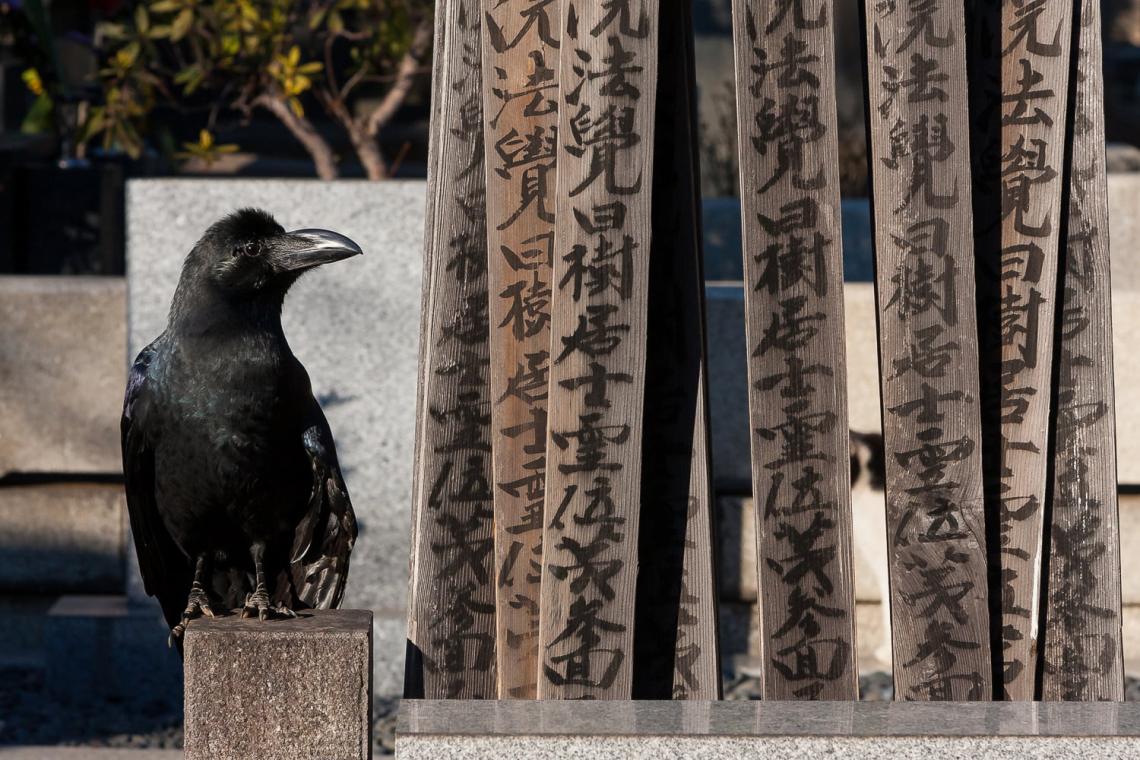Mastering Wildlife Shots with the Right (and Wrong) Gear: How to Adapt and Succeed in the Field
As a photojournalist living in the largest city in the world, making a regular connection with nature is difficult. The joke goes that seventy percent of Japan is mountain, and the other thirty percent is people. Good for me, of course; photojournalists shoot people. But bucolic escapes from the urban sprawl are more accessible than you’d imagine here. Japanese culture marks the changing seasons with a fervour lost in most modern societies, and there is lots of greenery to lose yourself in, even for a moment.
Key Insights
- Urban Wildlife: Nature thrives in cities, offering unique photography opportunities.
- Patience is Key: Waiting for the right moment is crucial for capturing wildlife.
- Gear Knowledge: Understanding your equipment can lead to impressive results, even with basic gear.
- Learn About Wildlife: Knowledge of local species enhances your photography and connection to nature.
- Capture the Ordinary: Common animals can offer compelling subjects and storytelling.
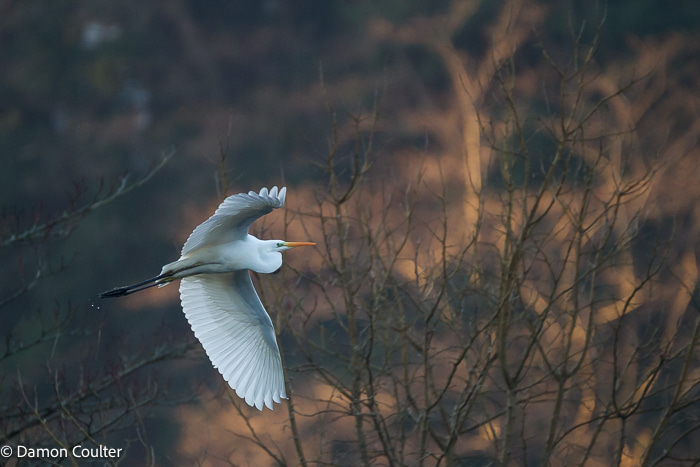
A Great Egret (Ardea alba) flying in my local park. This photo was taken while walking my dog one winter morning and was the image that made me want to do more wildlife photography.
Exploring Japan's Urban Nature: A Personal Journey
My local park, for example, has a small lake frequented by herons and egrets. I’d only dreamed of seeing these animals in the UK, and I started photographing them on morning walks with my dog. I saw my first kingfisher here, too, but the highlight was perhaps seeing a wild owl, something that had been an ambition for some time. Compared to the British countryside's sterility, Japan's nature is visible and diverse. Even the insects here are amazing, and bug-hunting is a childhood staple.
My dog began to view the addition of a camera to her walks with some resentment, though, so we visit the park separately nowadays because I find I really need my time in the trees. Not only does it recharge me, but the skills needed to get wildlife images are similar to those needed in photojournalism. If you are starting out as a wildlife photographer, as I am, These things seem important to keep in mind:
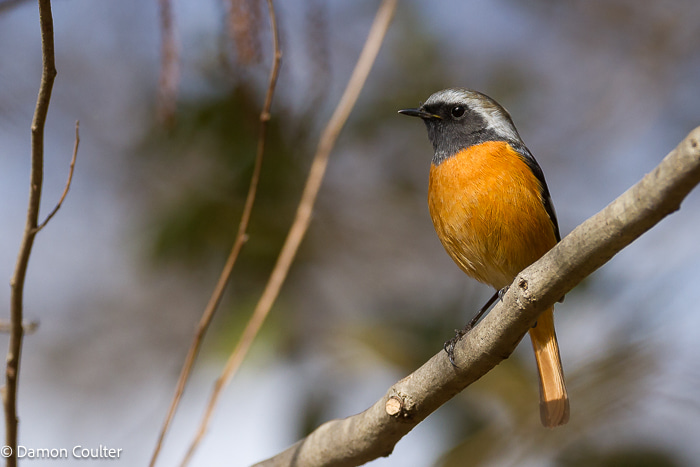
A male Daurian redstart bird (Phoenicurus auroreus). This colourful bird came to rest right in front of where I was waiting while trying to escape the attention of other photographers.
The Importance of Patience in Wildlife Photography
Wildlife photography is popular which can lead to packs of people chasing wildlife around. In my park kingfishers attract crowds of big lenses which follow the birds around noisily, paparazzi-style. I don’t do paparazzi work, and I don’t like this way of shooting wildlife either. I feel it is stressful to the animals so instead find a likely location and wait for the animals to come to me. This has been a great way to shoot kingfishers, red-flanked bluetails, and the super elusive Japanese bush warblers. Of course, animals escaping other photographers don’t always take a photogenic rest right in front of you, but that is okay. If you are sitting somewhere nice, especially in the winter sun, it is just nice being there. I have recently bought some camouflage clothing, though, so hopefully, the animals will come closer.
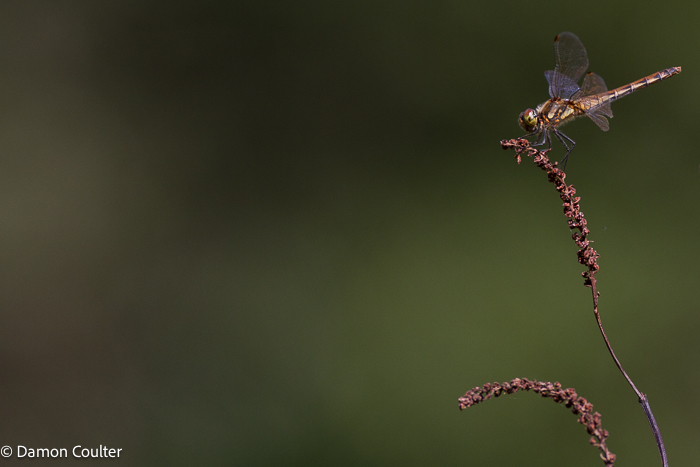
An Autumn Darter dragonfly (Sympetrum frequens). This was taken with my 300mm lens, which does not focus that close, so I had to show the insect graphically by using a very shallow depth of field and framing it against a different background colour.
Essential Gear for Wildlife Photographers
Because they need to be close, photographers often say gear doesn’t matter, but for wildlife photography, it does. I don’t have the top-of-the-range cameras and 600mm (or longer) lenses of the retired hobbyists around me. Indeed, that collection of expensive glass can be quite intimidating. I have a good 300mm lens, to be fair, but its reach is embarrassingly short for wildlife, so, just as I would if access to a news event is limiting my options, I try to think about what original angles I can get instead. If patience isn’t bringing the animal closer, try photographing them as part of their environment, using colours to isolate them or photograph them perched in winter trees or camouflaged in summer reeds. Some animals also have distinctive shapes, so they make good silhouettes. Try to keep the frame simple; use a shallow depth of field and make sure not too much distracts from what you’re trying to capture.
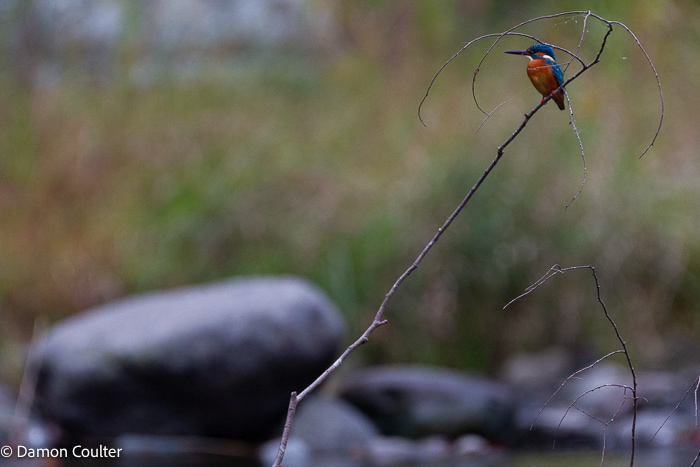
A common kingfisher (Alcedo atthis). This was taken on a camping trip where my 300mm lens was never going to let me get close enough to “fill the frame” with this colourful bird so I framed it on the interesting twig I had noticed it fishing from a few times.
Trying to focus on subjects that are small in the frame is also more challenging, so keep the ISO low to avoid noise softening the image, refocus, and shoot a lot. There will be many images that don’t make the cut. On the other hand, animals that are accustomed to humans being around can sometimes be approached quite closely if you’re careful. Your embarrassing gear might be good enough for close-ups you can be proud of.

An Eastern spot-billed duck (Anas zonorhyncha) sitting on a concrete weir wall. The duck just looked so happy despite the ugly, grey concrete environment it was in.
Tips for Photographing Wildlife in Natural and Urban Environments
Most places in the world don’t have large, interesting animals on your doorstep. There are no tigers in Japan, though recently, I heard bears have been seen in my area, which is frankly terrifying. I’d still love to photograph them, though. But I will shoot anything. Insects are colourful and fun though not having a dedicated macro lens necessitates experimentation and some cropping. Plants and flowers make great detail images and even abstracts, and my journalistic eye also likes finding juxtaposition. Sometimes, you can’t isolate the animal in the “wilderness”, so capturing them dealing with artificial landscapes or other human presences can still create compelling images.

A young Japanese Serow (Capricornis crispus) took during a hiking trip near my house in the mountains. A fleeting and unexpected encounter.
Understanding Animal Behavior: Key to Great Wildlife Photography
I made the CEO of Sony Playstation smile in a photoshoot once by mentioning his love of Nintendo. It is good to research your subjects to get better photographs; something as simple as knowing the dimorphic distinctions between males and females can help you identify them and understand what might happen in a scene you observe. Common animals are often overlooked in nature photography, so set yourself a challenge to shoot some aspect of their character, which, like street photography, can often be rewarding. It also helps, on a practical level, to know when and what animals might visit your area and what habits they have when they get there. Because some places do have wilder wildlife, it is also good to know how to identify and avoid dangerous snakes, alligators and venomous bugs.
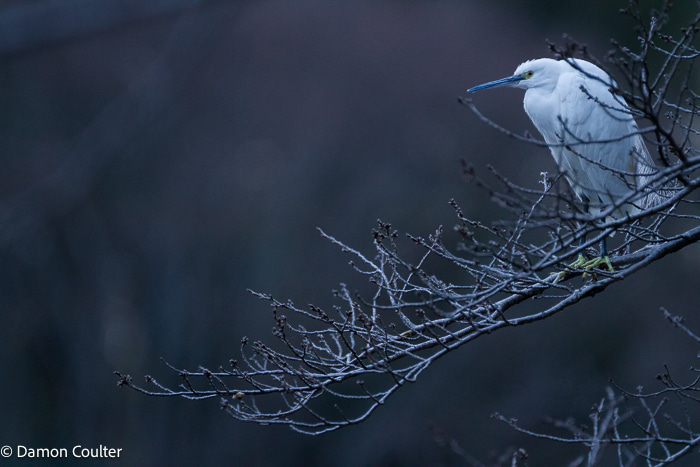
A Little Egret (Egretta Garzetta) perched in a tree at dusk. It was nearly dark when I took this on a grey, overcast day. I used a 1600 iso (the max my old DSLR can realistically do) and tried to hold the heavy lens steady which was not easy looking up into a tree.
Photographing in Challenging Conditions: How to Make the Most of It
Luckily, I’m a morning person, and as everyone knows, animals are more active in the morning and evening, so these are good times to head out. Heat haze and moisture in the air are also less of a problem at these times. But go out at the wrong times, too, and be ready to shoot anything you see. Go out in bad weather, in bad light or even at night and use the challenging conditions to experiment with your photography. Thanks to digital we can practice a lot cheaply and learn from our mistakes in the local park so that one day when we have won the lottery and have that big Sigma 60-600mm lens on our Mirrorless Canon Mark 2 body, we can trek into the Ugandan mountains to photograph gorillas or embark on an Antarctic odyssey for penguin portraits. We will be ready to make great photos.
Conclusion: Embracing the Journey of Wildlife Photography
Wildlife photography is as much about the process as it is about the final image. Through my experiences in Japan, I've learned that patience, adaptability, and a genuine appreciation for nature are key to capturing its beauty. Whether it's a fleeting moment with a kingfisher or the quiet observation of a common crow, each encounter offers an opportunity for growth and creativity.
Equipped with just a camera and a sense of curiosity, anyone can embark on this rewarding journey. The landscapes may change, the animals may elude us, but the joy of witnessing and documenting the wild remains constant. As we continue to navigate our urban environments, let’s strive to appreciate the wildlife around us and embrace the unique challenges that come with photographing it. So grab your camera, step outside, and see what stories unfold in your own backyard.
Lead Photo Caption - A Large-Billed Crow (Corvus macrorhynchos japonensis) in a Japanese cemetery. These amazing animals are a common wildlife encounter in Japanese cities, and many even consider them a nuisance, but I like meeting them.
Damon Coulter is a documentary photographer from Kent in the UK who has been covering news and social issues in Japan for the last 20 years. He started out as a climber, selling adventure articles and images in magazines to fund his travels. Wildlife photography is a recent passion that has reconnected him with his love of the outdoors and nature.
His photos can be seen (and bought) on his website: www.damoncoulter.com

